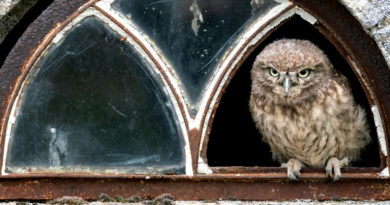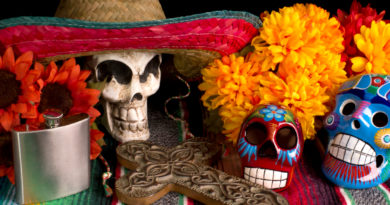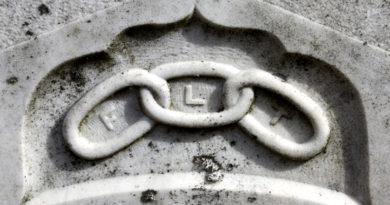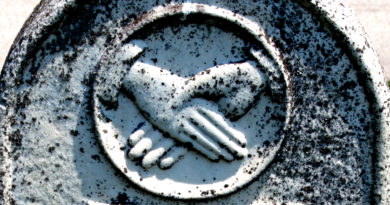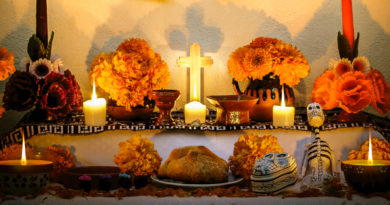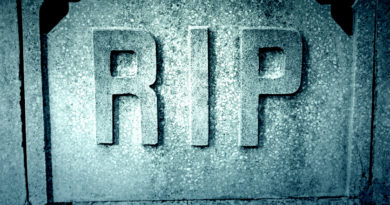Cemetery Headstone Symbols: Open Book
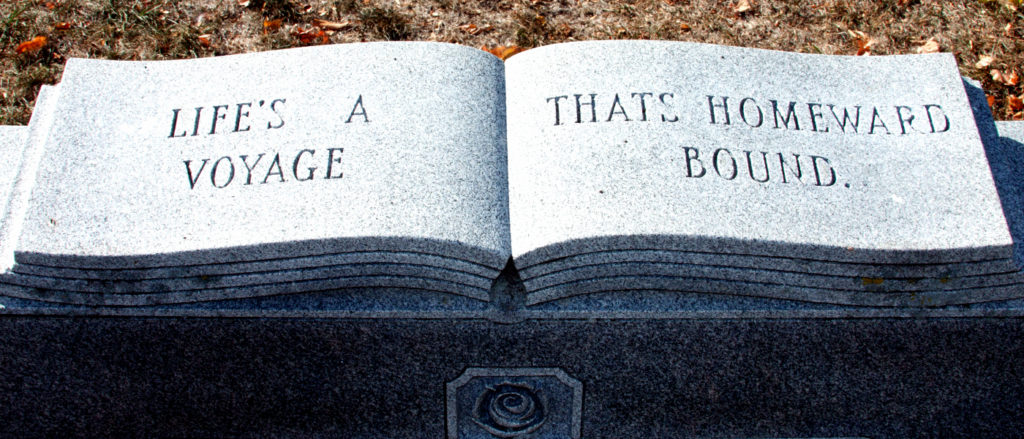
Photo © Chris Raymond
While visiting a cemetery, you might have wondered about a design you saw carved on an old tombstone and what it means. This article explains what an open book represents, a headstone symbol often found in cemeteries, church graveyards and memorial parks.
The Open-Book Symbol
For centuries, people have used books as symbols in paintings, sculpture and other types of artwork associated with the dead. The Etruscans, for instance, created a piece of funerary art depicting a deceased individual with a linen book as early as 425-400 B.C. The ancient Egyptians also created many funerary images depicting papyrus scrolls (their version of books) hundreds of years before that, often in association with their Book of the Dead.
While its first symbolic use in a relatively modern cemetery is unknown, the earliest open-book symbols were probably carved into headstones as a two-dimensional outline. This outline-style survives in graveyards and cemeteries dating back to the early 1700s and is still used today.
The open-book symbol on a headstone can also assume a slightly more three-dimensional form through the technique of bas-relief. In these cases, the book itself often appears small relative to the overall surface area and might contain another symbol, such as a Christian cross, the Star of David, etc.
In addition, as seen in the photograph above, fully three-dimensional open books now grace many headstones and are easy to recognize. The pages of the book might feature text, but it is not uncommon to encounter an open book with blank pages in a cemetery.
The Meaning of an Open Book
It is easy to overlook or dismiss altogether the meaning of such a commonplace item, but books constitute a rich, profound symbology for both the living and the dead. The English language reflects this in many modern phrases and idioms, such as:
• I can read you like an open book.
• Don’t judge a book by its cover.
• She closed that chapter of her life.
• That’s the oldest trick in the book.
• He does everything by the book.
Within the context of a cemetery, graveyard or memorial park, the appearance of an open book can likewise suggest numerous meanings, and it can prove difficult at times to understand its presence without more information about the deceased. That said, an open book on a headstone or gravemarker might symbolize, among other things:
• A religious or holy book, such as the Bible, the Koran or the Book of Mormon, to indicate the deceased’s spiritual beliefs and/or vocation, such as a minister, priest, teacher, librarian, author, cook, etc.
• The Book of Life, either in a general sense or specific to the biblical passage in Revelation stating that only those whose names are contained within this book will receive everlasting life in heaven.
• The deceased’s personality, i.e., he or she was open to new experiences, ideas, thoughts, etc., or sharing with others.
• His or her eagerness and/or desire to learn new information, skills, etc., during life.
• A record of the individual’s accomplishments.
• A reflection of his or her good deeds, i.e., that the deceased lived a pure life and has no reason to feel ashamed or hide anything.
• The concept that a headstone or gravemarker itself serves as a biographical document of a life lived, and that each person “writes” such a book during his or her lifetime.
• A life cut short by death, particularly if the right-hand page features a dog-eared corner.
• That the deceased was a bibliophile, i.e., someone who loved reading and books.
It’s important to understand that an individual or surviving family member might also select an open book purely for personalization reasons. As depicted in the photograph above, an open-book symbol on a cemetery gravemarker provides a wonderful opportunity to include a meaningful religious verse, phrase, quotation, epitaph or information about the deceased.
Finally, always keep in mind that an individual or surviving family member might just select an open book simply because he or she liked the way it looked. Thus, despite the various meanings offered above, the rich symbolism books offer might be irrelevant or unknown from the perspective of the deceased and/or his or her family.
Sources:
“Books of the Dead: Symbolic Representations of Writing in the 5th-2nd centuries BC” by Allison J. Weir, September 22, 2010. www.academia.edu. Retrieved August 5, 2018. http://www.academia.edu/1673082/Books_of_the_Dead_Symbolic_Depictions_of_Texts_in_Etruscan_Funerary_Art_from_the_5th_-_2nd_centuries_BC


